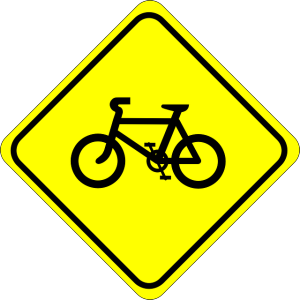How Dangerous is Cycling?
 Those with little road-side cycling experience often wonder if cycling is safe. Though the answer is not a simple “yes” or “no”—as with most things—a cyclist who understands traffic laws regarding bicycles will more often than not be safe on the road.
Those with little road-side cycling experience often wonder if cycling is safe. Though the answer is not a simple “yes” or “no”—as with most things—a cyclist who understands traffic laws regarding bicycles will more often than not be safe on the road.
Cyclist accidents are rare in comparison to those of motorists and pedestrians, yet, according to the National Highway Traffic Safety Administration (NHTSA), 17% of road user fatalities in 2012 were cyclists. In other words, cycling accidents are less likely to occur, but they tend to be more serious when they do.
It is important to consider your environment. While inexperienced cyclists may fear the badly paved and high-speed roads of rural areas, the real hazard exists within city limits. Most cyclist deaths occur in urban settings, particularly on streets with unclear or absent crossing directions. While cyclists can enjoy scenic, rural roads at leisure, urban cyclists take on the danger of sharing the road with potentially negligent drivers.
What’s at Stake?
In most cases, cyclists are able to keep themselves safe on the road. However, cyclists who share the road with others do not have complete control over what happens to them, but are subject to the judgment of others. These accidents can come at a terrible cost to the cyclist, including medical costs, quality of life, work loss, and even death. The total costs associated with cyclist injuries for both fatal and non-fatal accidents in 2005 was $5 billion according to a study analyzing road user accident costs conducted by Rebecca Nauman and fellow writers. According to the Association for the Advancement of Automotive Medicine (AAAM), the average costs for pedal cycle accidents are $64,425 for fatal accidents and $32,300 for survivors. While these numbers may seem high, few are prepared for or aware of the long term costs which can accompany cyclist accidents.
Be Cautious
Because of the high-stakes involved in accidents, it is of utmost importance that cyclists take all measures possible to prevent them from occurring—especially those who are commuting daily through urban areas. The majority of bicycle accidents and fatalities that occur can be prevented by being familiar with your city’s transportation laws, heeding signals and rights-of-way when necessary, wearing proper protective equipment, and most importantly, being alert and conscious of others sharing the road.
Become Informed
Information for avoiding, handling, and coping with bicycle accidents is out there—it’s just a matter of knowing where to find it. For example, you can get a free copy of the Utah Bicycle Accident Handbook offered by Christensen & Hymas at utahaccidentbooks.com. In addition to this resource, Christensen & Hymas offer a free initial consultation for those who have received injuries due to another’s negligence or who have lost a loved one in a cycling accident. If you or someone you know has been wrongfully injured, do not hesitate to schedule an appointment with Christensen & Hymas and our compassionate and experienced lawyers will help you learn about your options for financial compensation.
For more information, see:
- NHTSA’s article 2012 Motor Vehicle Crashes: Overview
- World Health Organization’s fact sheet “Road traffic injuries“
- Naumann RB, Dellinger AM, Zaloshnja E, Lawrence BA, Miller TR’s article Incidence and total lifetime costs of motor vehicle-related fatal and nonfatal injury by road user type, United States, 2005
- Association for the Advancement of Automotive Medicine article Pedestrian and Pedalcyclist Injury Costs in the United States by Age and Injury Severity
